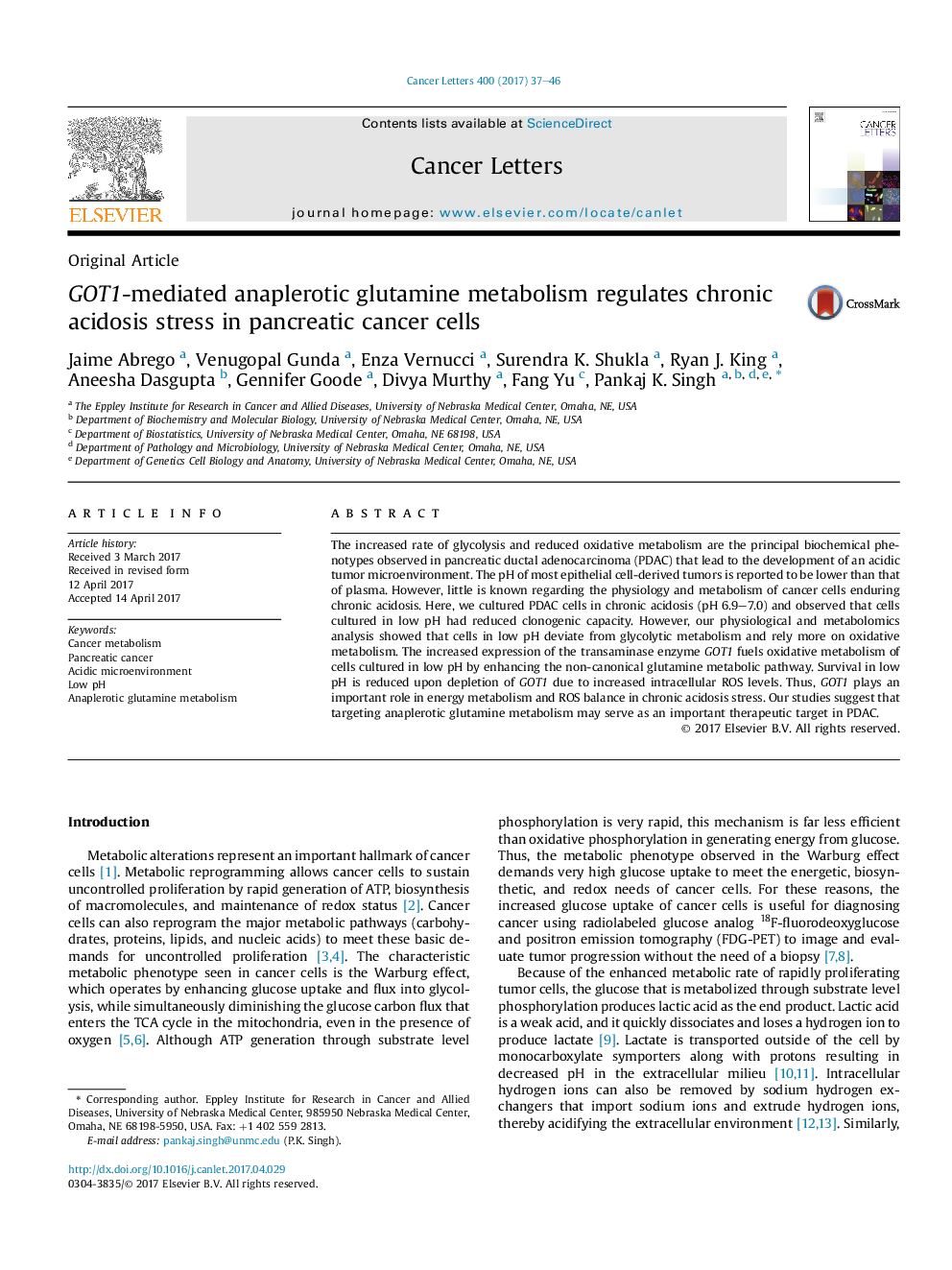| Article ID | Journal | Published Year | Pages | File Type |
|---|---|---|---|---|
| 5525505 | Cancer Letters | 2017 | 10 Pages |
â¢Pancreatic cancer cell growth is significantly reduced under low pH conditions.â¢Low pH diminishes glucose uptake and metabolism.â¢Low pH facilitates glutamine metabolism and oxidative phosphorylation.â¢GOT1-mediated anaplerotic metabolism counters ROS production under low pH conditions.â¢Oxaloacetate can rescue GOT1 knockdown cells under low pH.
The increased rate of glycolysis and reduced oxidative metabolism are the principal biochemical phenotypes observed in pancreatic ductal adenocarcinoma (PDAC) that lead to the development of an acidic tumor microenvironment. The pH of most epithelial cell-derived tumors is reported to be lower than that of plasma. However, little is known regarding the physiology and metabolism of cancer cells enduring chronic acidosis. Here, we cultured PDAC cells in chronic acidosis (pH 6.9-7.0) and observed that cells cultured in low pH had reduced clonogenic capacity. However, our physiological and metabolomics analysis showed that cells in low pH deviate from glycolytic metabolism and rely more on oxidative metabolism. The increased expression of the transaminase enzyme GOT1 fuels oxidative metabolism of cells cultured in low pH by enhancing the non-canonical glutamine metabolic pathway. Survival in low pH is reduced upon depletion of GOT1 due to increased intracellular ROS levels. Thus, GOT1 plays an important role in energy metabolism and ROS balance in chronic acidosis stress. Our studies suggest that targeting anaplerotic glutamine metabolism may serve as an important therapeutic target in PDAC.
